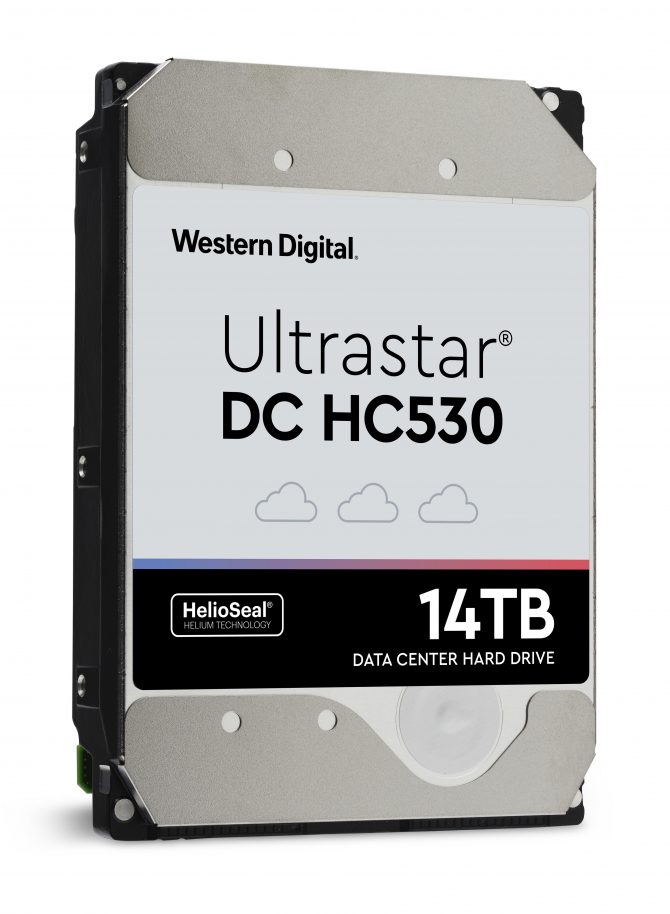Western Digital today introduced its Ultrastar DC HC530 HDD. The disk has a capacity of 14TB and uses perpendicular magnetic recording (PMR) with two dimensional magnetic recording (TDMR) read heads. It's available in a capacity of 14GB with either a SAS or SATA interface.
The high capacity of the WD Ultrastar DC HC530 (datasheet, PDF) is possible because the drive uses HelioSeal technology. This means the drive is filled with helium. Because helium has a lower density than air, platters and heads suffer from less friction which reduces generation of heat. Because the disks remain cooler, the platters can be closer to each other. This makes it possible to fit more platters in the same form-factor and thus allows for higher capacity drives. Due to helium's properties, it also takes less energy to rotate the platters, which has the benefit that helium filled HDDs also consume less energy. To properly function, the HDDs have to be airtight.
The DC HC530 contains eight platters of 1.75 TB each and they rotate at 7,200 RPM. The drive makes use of TDMR and dual-stage microactuators for accurater head positioning. This is especially an advantage in multi-drive environments where operational vibration can be an issue.The drive also features Rotational Vibration Safeguard (RVS), which has a similar purpose. Together, all technologies should result in better performance, data integrity, and reliability.
Western Digital has also fitted 512MB of RAM in the drive as data buffer and the company lists a sustained transfer rate of 267 MB/s with a typical seek time of 7.5 milliseconds. The drive has a mean time between failures of 2.5 million and Western Digital provides a 5-year limited warranty.
Two dimensional magnetic recording (TDMR), as used on this drive, is fairly new. The technology has the benefit of increasing data density with about 5-10% by allowing narrower tracks and smaller pitches on the platters. With narrower tracks, interference becomes a problem for the magnetic read heads. To counter the interference, multiple reads heads per data track are used. By combining the data from multiple heads, the interference can be filtered out. What is left, is the actual correct data signal, also known as signal to noise ratio (SNR).
















